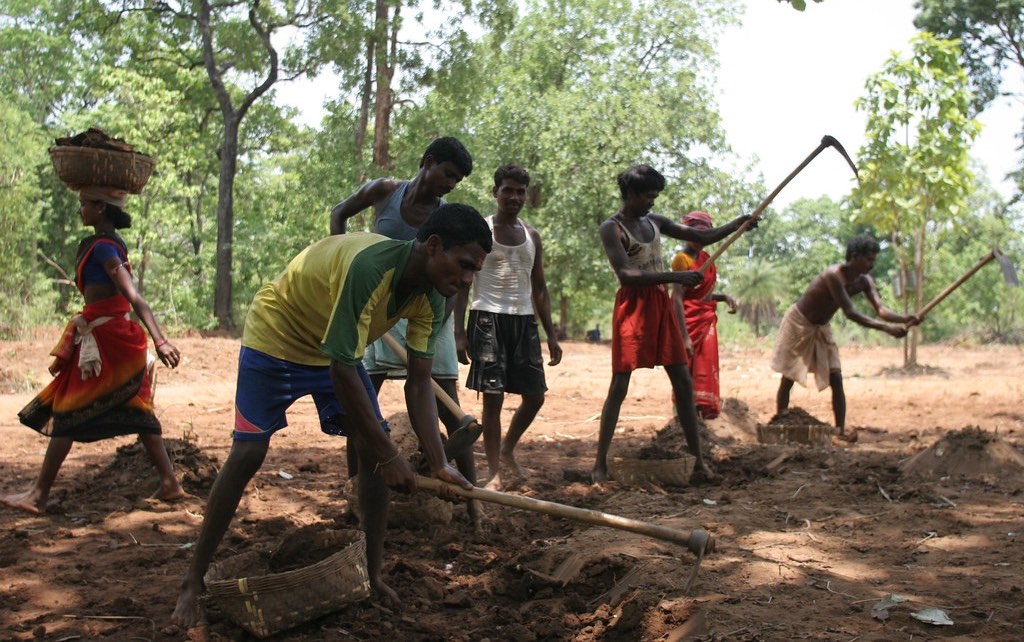With a budget of $7.47 billion in 2017-18, India’s National Rural Employment Guarantee Scheme (NREGS) is one of the largest programs of its kind globally. The program guarantees employment for up to 100 days per year for each rural household, with wages equal for men and women. Thus, it not only serves as a form of employment insurance but also has the potential to enhance female empowerment. To ensure transparency, NREGS makes all work-related data available on the Internet, deposits payments directly into beneficiaries’ accounts, and conducts regular social audits.
In their new paper, Klaus Deininger of the World Bank and IFPRI Senior Research Fellow Yanyan Liu undertake an empirical analysis of the program’s impact on participants’ welfare, finding that, after one-year exposure, it improves participants’ nutrition and, after two years, their ability to accumulate nonfinancial assets. The study also shows that poor and marginalized households benefit the most from NREGS.
Context
Persistently high rates of extreme poverty and gender inequality, together with the rising frequency of natural and human-made disasters, are boosting policy makers’ interest in public works programs to provide productive safety nets. Two things in particular make such programs especially attractive compared with available alternatives: The ability to set wages in a way that is self-targeting and that fosters gender equality; and the opportunity to construct physical infrastructure that can enhance growth and wages in the long term.
On the other hand, one potential downside is that implementing such programs might require an extreme level of administrative control to prevent the loss or waste of resources—or having them end up lining the pockets of local officials.
While its innovative features suggest NREGS’s potential to herald a new generation of such programs, its implementation has been controversial. Supporters note that awareness and participation rates, especially among women, are significantly higher than those in earlier or comparable programs. There is also anecdotal evidence suggesting that NREGS has contributed to decentralization, transparency of political processes, and female empowerment. Critics point out that the program’s high wages cause leakage and corruption that may undermine impacts. Consequently, instead of helping people move out of agriculture, the program may in fact encourage return migration to rural areas. Empirical analysis of the impact of NREGS can help better understand whether these arguments are justified.
Study
The paper studies NREGS’s impacts on key welfare measures for beneficiaries: Consumption expenditure, nutritional intake, and asset accumulation.
Participation in NREGS can yield at least two types of direct benefits, the authors note. First, by increasing income through wages higher than those available in the market (especially for female workers) or by providing employment at times when there is no demand from other sources. Second, some of the income gained can be channeled toward savings and investment to improve households’ income-generating ability and strengthen their resilience in the longer term.
The study draws on a three-round panel of 4013 households in the Indian state of Andhra Pradesh, administrative data on household participation in NREGS, and village and population census data.
Results
The most immediate positive impact from NREGS was on nutrition. The study found that, after one-year exposure to the program, participants increased the energy and protein intake by 6.9% each. Consumption expenditure for the poor households after the same period increased by about 8.7%.
In districts where the program had been available for two years, participants increased accumulation of non-financial assets by 16%, strengthening their resilience to economic and environmental shocks. However, the authors found no evidence that the increased income from NREGS resulted in higher investment in land or other on-farm improvement after one- or two-year program exposure.
Among those who were found to benefit the most are the poorest, particularly female-headed households and those with disabled members, and scheduled castes and tribes. The authors point out that more positive results for these groups suggest that NREGS may help reduce caste-based inequality in longer term. This is an especially important finding since caste- (or group-) based inequality is extremely persistent and often has a greater negative impact on current generations than non-group-based inequality. Such inequality is still prevalent in modern India and effective government programs to deal with it have been rather limited.
The authors suggest that a complementary study is needed to analyze longer-term effects of NGRES and compare the program to alternative forms of safety nets.
Evgeniya Anisimova is a Senior Communications Specialist with the CGIAR Research Program on Policies, Institutions, and Markets (PIM). This post first appeared on the PIM blog.
This study forms part of the PIM portfolio under the research flagship Social Protection for Agriculture and Resilience. The authors gratefully acknowledge funding from the International Initiative for Impact Evaluation (3ie), PIM, and the World Bank Gender Trust Fund and Knowledge for Change Program.







